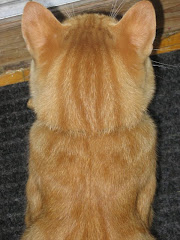
Bridges to Diamonds
A closer look at Prosthodontics
Füsun Atalay ~ Copyright © 1999
"You wanna take a PA of this, Suzanne, so we can see how the infected area looks?"
With this mysterious, professional lingo Dr. Michael Moscovitch, a veteran prosthodontist since 1978, disappears into the next room to attend to the other patient sprawled on the dreaded dentist’s chair.
He has been filing crooked teeth to fit them with straight, brilliant and durable porcelain caps which last a lifetime; building bridges to support missing teeth; polishing teeth discoloured from coffe or tobacco stains to cover them with a space age composites and or ceramics to improve the patient’s entire smile and self-concept.
The left corner of my lips begins to feel tingly and my upper lip starts ballooning into my cheek. X-rays and jaw impressions are taken so that the temporary bridge can be replaced by the permanent one containing porcelain. I learn later that PA or peri-apical radiograph simply means X-ray.
Welcome to the world of prosthodontics! The prosthodontist is not someone to frequent for a simple filling or a basic checkup unless s/he has been your dentist all along. He is a specialist in restoring natural teeth, creating and replacing dentures, implanting supported teeth, and building other prosthetic devices.
Dental prosthesis, like any other type of prosthesis is a reconstructive art of the damaged parts of the mouth, nose and the dentition, the tooth system including the number, kind and arrangement of teeth.. Unfortunately there is not much promotional literature on prostodontics.
"Prosthodontists are supported to a large extent by the profession itself. Other dentists will refer difficult cases to us, whereas general dentists are sought more directly by the public," says Dr. Michael Moscovitch of Westmount through his blue surgical mask as he peers into my gadget filled-mouth with his dentist’s binoculars.
Precision and state of the art procedures in rebuilding and replacing lost teeth with precious metals and ceramics are of utmost importance in this plush, third floor suite. One wall alone is covered with his gold-sealed diplomas and certifications from renowned universities such as Boston School of Dentistry, McGill University, Chicago Dental Society and Université de Montréal.
Dr. Moscovitch has been my dentist since 1982. He has aligned my overlapping cuspids to meet in a straight line, replaced two upper incisors with porcelain caps, and filled a few molars with blending alloys so that unsightly silver fillings do not sparkle when I laugh. Ironically, I lived some of my most relaxing moments on his modern, leather chair listening to Tchaikovsky’s "Winter Dreams" or Scriabin’s complete piano etudes which take the edge off the humming of the drills and the constant gurgling of the suction attachments.
Today I am here to have a faulty root canal work corrected. The root canal filling was done by a regular dentist during my financially lean teen years, and recently it started an infection in the gum. Unfortunately the bicuspid has to be extracted since it has a cap, and a bridge must be built to support a brand new porcelain tooth in its place.
I ask him if silver material is still used in fillings.
"In ordinary cases, dental amalgam has been a favoured material useful in restorative dentistry for posterior teeth where aesthetic requirements are a low priority," says Dr. Moscovitch voicing the current thoughts of the profession. "And restorations made from this material are durable, easy to place and relatively inexpensive."
I inquire what makes the process relatively inexpensive. "Because direct materials allow the tooth to be restored in one appointment, with no requirement for impression taking, temporisation, or laboratory procedures."
I learn that in Canada, medical devices and materials, including dental amalgam, a mixture of mercury, silver, copper and tin, are under the regulatory authority of the Health Protection Branch of Health Canada. The savings in time and cost to the patient associated with the direct technique are substantial. According to the report by the Canadian Dental Association the cost of a direct restoration, on average, is only about "one-quarter that of an indirect restoration".
More than 160 million dental amalgam restorations are placed in the teeth of North American dental patients each year. Dental amalgam, made by mixing a metal powder composed of silver, tin, and copper with liquid mercury, is still considered by many dentists to be the profession's most important restorative material. Two of the primary reasons for its success -- low cost and ease of placement -- are in large part attributable to its being a direct filling material.
An option to the compo-ionomers and composite resins is the recently-developed family of gallium alloys. Dental amalgam has been used in dentistry for over 150 years. However, although gallium alloys are mercury-free, in their present state of development they may not be a viable option as a substitute for dental amalgam. The excessive corrosion of the current gallium alloys may preclude their use as a suitable restorative material for permanent teeth.
These alloys are composed of a metal powder whose composition is very similar to that of conventional amalgam. The gallium alloys are direct metal restorative materials that are mixed, placed and carved in an almost identical manner as dental amalgam. They appear to have low toxicity, and are not considered to pose any more a threat to health than do other widely-accepted materials like composite resin, glass ionomer (GI) cements or dental amalgam do.
Hybrid glass ionomer cements and hybrid glass ionomer resins have been available to the dental profession since the late 1980's although very few clinical studies on hybrid glass-ionomer materials have been published.
Prosthodontics, however, is more aesthetics-oriented.. Therefore, direct materials, including hybrid GI cements, composite resins, and ceramics and composites, have the potential to be used successfully as alternatives to dental amalgam when the appearance is of paramount importance.
At its most glamorous, the world of dental reconstruction is where beautiful porcelain teeth and million-dollar smiles are created at a fraction of the cost of the diamond stud embedded into a perfect bicuspid. More often, however, the routine jobs are replacing teeth whether they are dentures, bridges or a single broken, useless tooth.
This is cosmetic and restorative dentistry which can enhance your smile through a unique combination of constantly developing trends such as dental implantation, CAD/CAM (computer aided design and manufacture, bonded ceramics and composites) and the passion of the prosthodontist in his quest for perfection in natural- looking reconstruction.
When your smile is attractive, dentists and patients agree that other benefits such as an improved self-image which encourages better dental hygiene and, ultimately, better overall oral health follows.
By the end of my two hour appointment, my lips are still frozen, but the smile reflected in the silver hand-mirror confirms that the last four visits, all the discomfort and the couple of grand I am about to sign away were worth it. I realize that with the small investment I have poured into my smile in the last twelve years, I could have bought a car, or taken a luxury cruise. However, I know that my sparkling smile and my self esteem will far outlive the memories of a cruise or the body of a brand new car.
THE VISIT
Copyright © Füsun Atalay
I feel his warm fingers
as they touch the corner of my lips
parting them skillfully.
Then the quick jab
that sends quivers through me.
My nails dig into my palms
in a tight fist
and I feel as if that moment
will stretch into eternity.
Beads of perspiration
line-up on my temples;
as he withdraws, I hear him say,
"That wasn’t so bad, was it?"
I am almost embarrassed
wondering if terror is etched
on my face
in brazen brush strokes
that divulge the story
of my foolish fears.
The blitz of customary sounds
of alto shrills, base drills
once again play the themes
of akin, familiar melodies-
and I surrender
to the growing numbness
that light the fires on my cheeks,
inviting my drowsy eye lids
to enter a world of dreams.
This is my moment in the sun:
to change the dreaded hour
into a few moments of fun.
It won’t the first time-
to indulge in make belief-
(On that reclining chair
I’ve written so many stories -
of my youth and endless dreams.)
Then his voice wakes me up
with a pat on my cheek,
"You’ll need another appointment for next week."
I nod in a daze- half asleep;
try to smile and garble
something that sounds like
"Hank - u"-
but, he knows what I mean
in spite of my frozen tongue
and dysfunctional, fat, upper lip.
~~~~~~~~~~~~~~~~~~~~~~~~~~~~~~~~~
All Rights belong to Füsun Atalay © 1999








































No comments:
Post a Comment